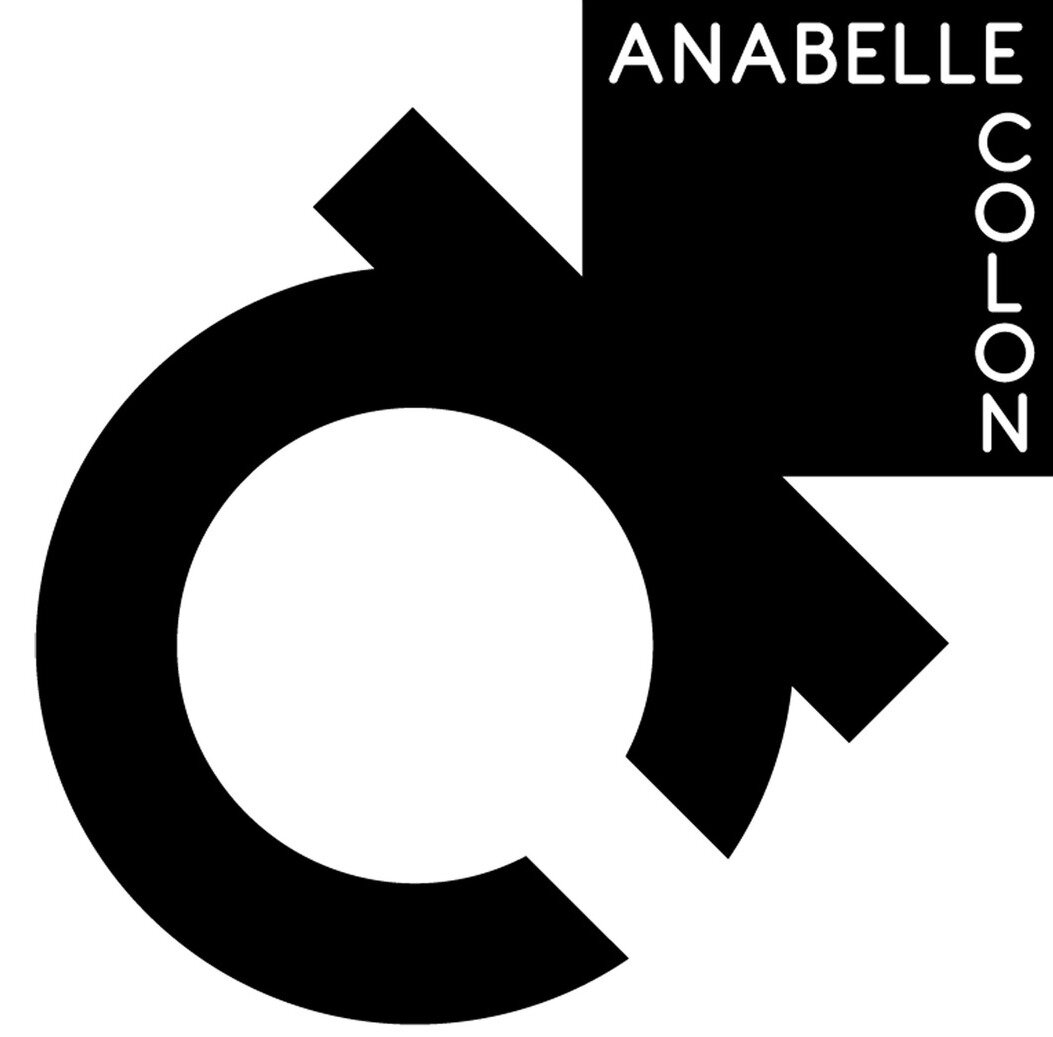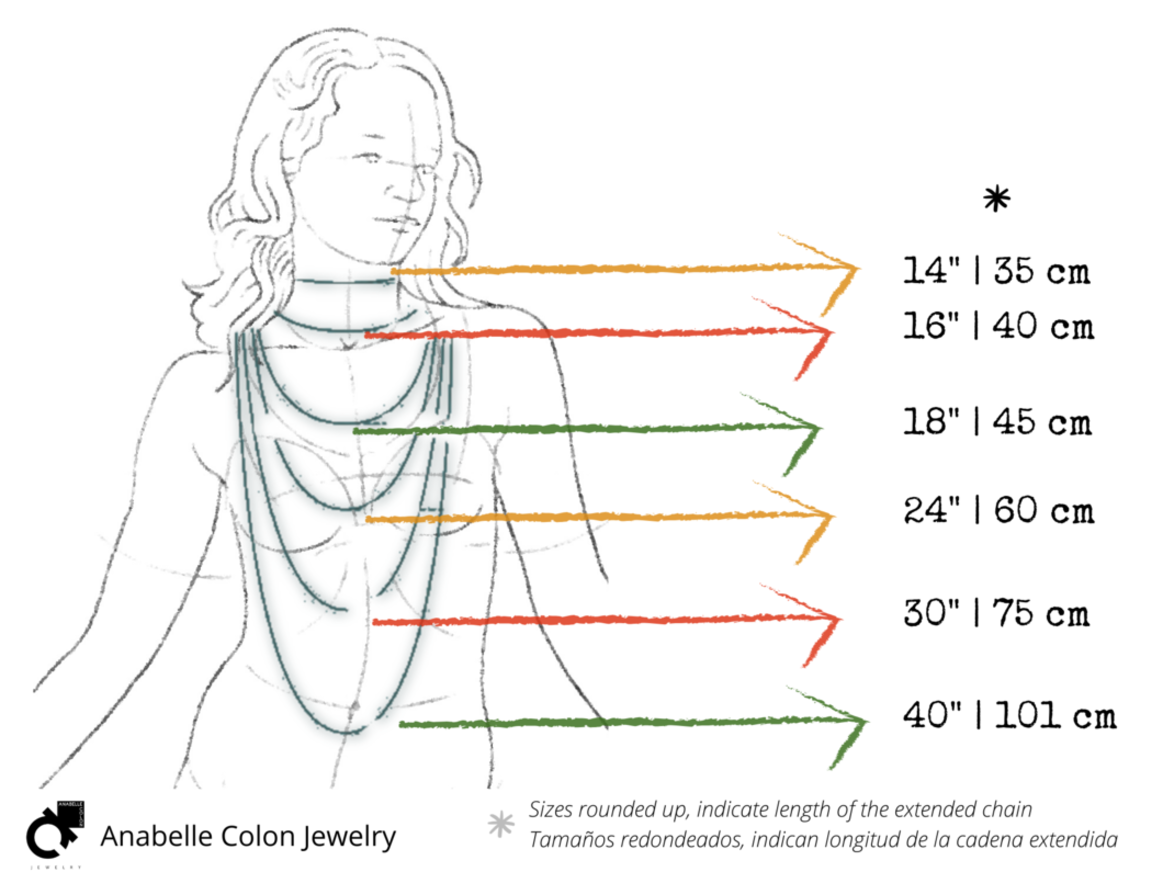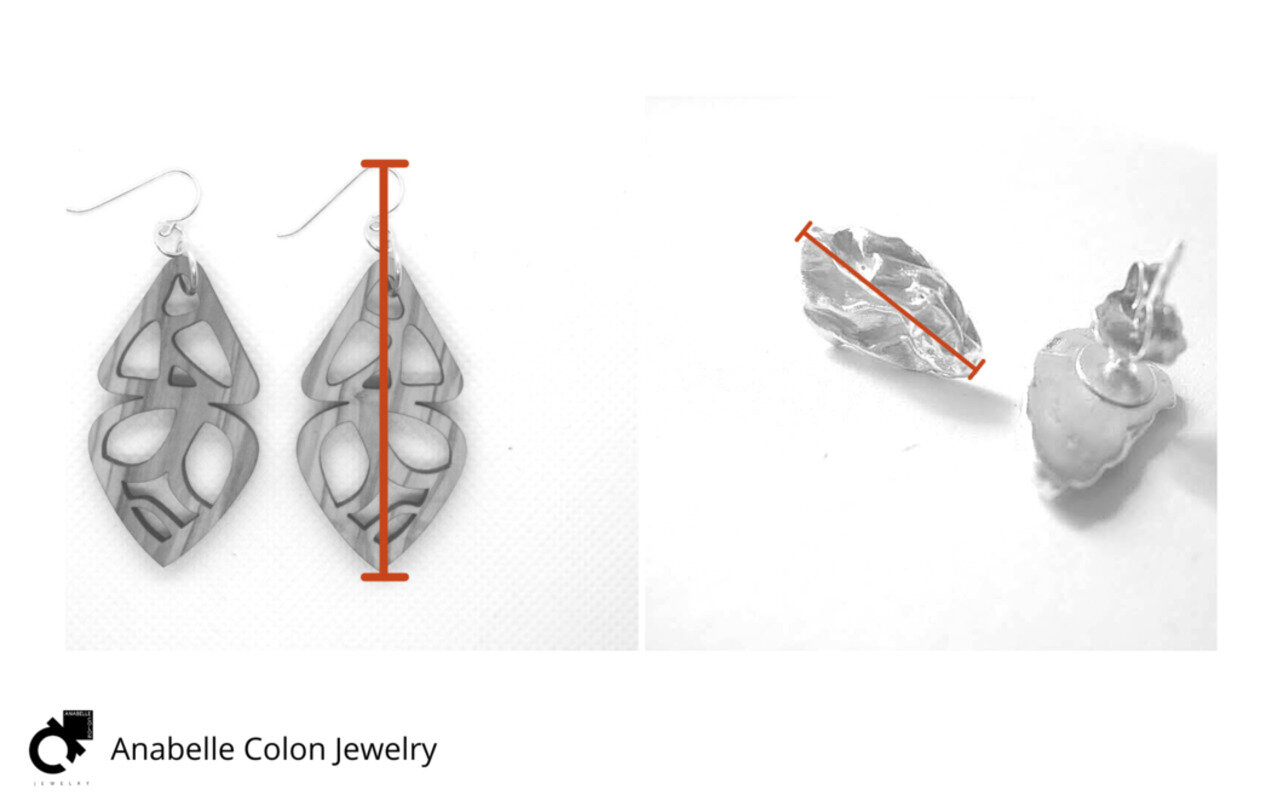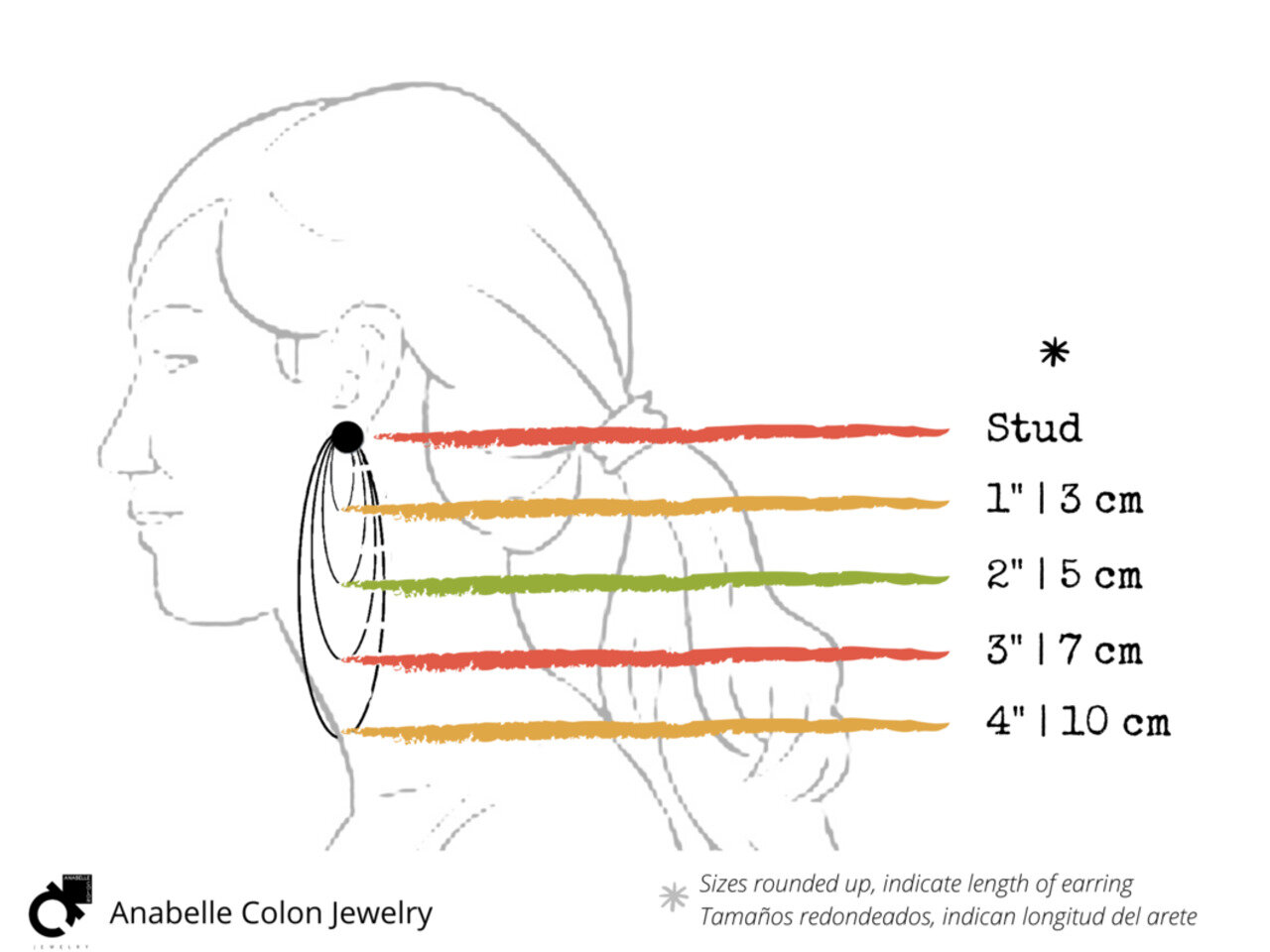Jewelry Size Guide
In the description of each piece of jewelry you can find approximate measurements in inches and centimetres. These measurements are only an indication. Anabelle Colon Jewelry is handmade, and actual measurements may vary slightly. Don't hesitate to contact me before placing your order if you have any sizing questions.
Necklace Size Guide
The main measurement of a necklace is the length of the chain or cord when open and fully extended. Make sure that the necklace you love is the right length for you.
A good way to test the length of a necklace is to measure and cut a string the size of the necklace you like, and try it on. Take into account that pendants and motifs add length to necklaces. Large motifs also change the way the necklace lay on your body.
Besides the overall length of a necklace, I always include a reference for the size and number of motifs. Here are a few standard necklace lengths for women and where they typically sit on your body:
Earrings Size Guide
Earring's dimensions are given in the form of maximum length including the earwire, and maximum width.
The length of earrings with hook earwires is measured from where the earring attaches to your ears to the bottom of the design. For stud earrings or post earrings, the length is measured from top to bottom of the design.
One way of testing the size of your earrings is to measure and cut a piece of paper with the given measurements. Place the paper against your earlobe to check if that is the look you are after.
Bracelet Size Guide
Each bracelet’s description includes two measurements: the bracelet size, which corresponds to the inside circumference, and the bracelet width. The length of the gap in open bracelets is already accounted for in the given size.
The best way to know if the bracelet will fit is to test it’s size on your wrist (or your hand, depending on the kind of bracelet).
Sizing a cuff bracelet:
A cuff is an open bracelet that sits on your wrist with the gap on the inside.
Measure and cut a strip of paper the exact size of the bracelet of your choice.
Wrap the paper around your wrist where you would like to wear your bracelet (usually below the wrist bone). You can attach the ends of the paper together with a small piece of tape while you check the fit. You can also use a cloth measuring tape to wrap the measured length around your wrist.
Check the fit for comfort, and compare it with how you like to wear your bracelets. The bracelet should not move around too much, and should not dig in your skin.
The width of the bracelet will influence how well it will fit. Bear in mind that if the bracelet is wider than 1” (2.5 cm), you will need a slightly larger size than if you are getting a bracelet under 1" wide.
Sizing a bangle:
Bangles are rigid closed circles worn loose on the wrist or pushed up the forearm.
1. Close your fingers together, bringing your thumb and little finger to touch (as if you were putting on a bangle).
2. Using a strip of paper or measuring tape, measure around the widest point of your closed hand, pulling the tape or paper tight against the skin.
3. If you are using a plain strip of paper, mark the paper with a pen where it overlaps on your hand, then measure the strip with a ruler.
4. Choose a bangle with a size as close to your hand measurement as possible. A closed rigid bracelet should fit snugly as it slides over your hand, and loose on your wrist.






